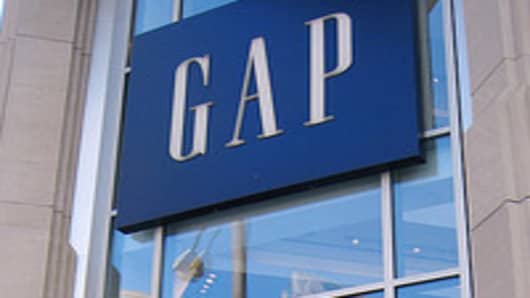Long-term Gap shareholders will need to be a little more patient.
The nation's largest apparel retailer told investors gathered at the Piper Jaffray Consumer Conference in New York Wednesday that some of the actions it plans to take to turn around its business will be apparent by this Christmas holiday season, but most won't come until next year.
"I and the board and the entire management team take a long-term view of the business... we are dealing with inflationary pressures the industry hasn't seen in 30 years," Gap CEO Glenn Murphy told CNBC in a rare conversation after the presentation. "Keep your eye on the long-term. We're not making any near-term decisions on what's sure to cycle through."
According to Murphy, Gap's top priority is to improve the company's North American business, which has been hurt in part by a poor assortment of merchandise that hasn't excited picky consumers.
"The American business unit is going to go through change," Murphy said. "We have been tapping at the edges in Gap North America, but that's not good enough."
To do this, the company has to improve its products.
"What was good in 2006 is basically good today," he said. "We have to get customers to buy product impulsively again, and to do that our product has to be that much better."
Murphy was one of several retail, restaurant, and leisure company executives at the conference who talked about the strong headwinds of rising cotton, gas and food prices and the challenge of keeping up with constantly changing consumer preferences.
Gap is two- to two-and-a-half times the size of many of its competitors, and Murphy seems to agree that at least on some level, Gap is too big to succeed, acknowledging its size hasn't been an advantage.
Gap has been closing locations and reducing the footprint of many of its North American stores. Murphy has a target in mind, saying "700 stores is the right footprint by 2013".
Another of Gap's recent structural changes has been the shortening and speeding of the pipeline when it comes to vendors. Now, the goal is leveraging this change to the company's advantage.
"It's built, but now we have to feed it," Murphy said.
While assortment continues to be an issue for Gap, rising input costs are a major headwind for nearly every retailer here today. Murphy addressed the issue head on: "We spent the last eight weeks rethinking our approach... we have changed our strategy for spring. Cotton price pressures are completely unacceptable."



